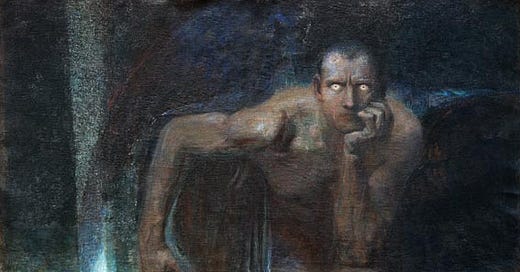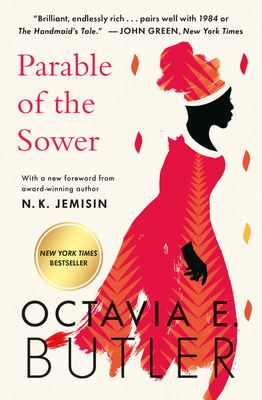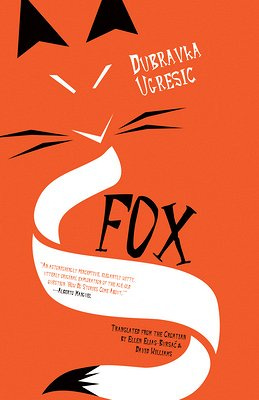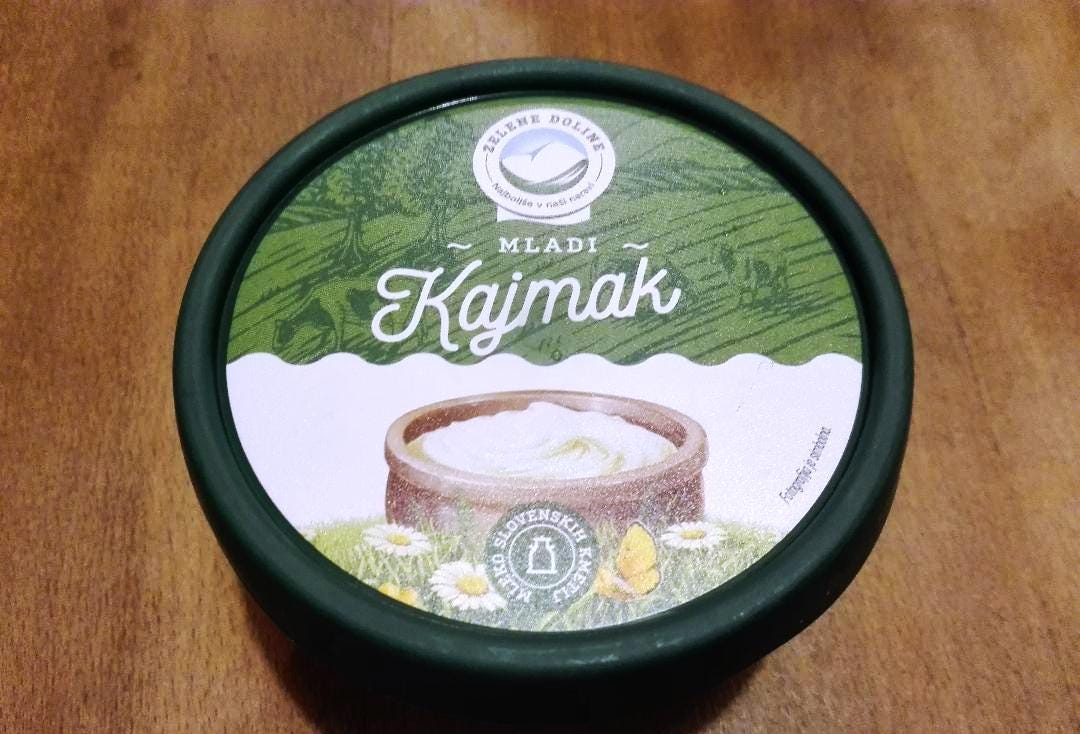Aesthetic Arrest: Weekly Cultural Highlights 6/11/22
“The aesthetic experience is a simple beholding of the object . . . you experience a radiance. You are held in aesthetic arrest.” - Joseph Campbell
Aesthetic Arrest is our weekly dip into the Epicurean pleasures we’ve been enjoying lately. Here we go!
[Editor’s Note: Depending on your email provider, you may see extraneous spacing after links or bolded/italicized words in your email. To view this article as intended, just click on the post title.]
Ryan Wildstar’s Recommendations:
Reading: In 2016, I read Octavia Butler’s Parable of the Sower and it had a decisive impact upon me. Only a handful of writers have the ability to use science fiction to accurately predict the future. Octavia Butler is one of them. The novel is her vision of what America may look like if it continues on its current path. After we left America, I then read Parable of the Talents, Kindred, Fledgling, and the entire Lilith’s Brood trilogy. I would like nothing more than to believe that Octavia Butler was not some kind of clairvoyant prophet but was simply one of the greatest sci-fi writers that has ever graced the page. And while I am wholeheartedly certain of the veracity of the latter, I am not at all convinced of the dubiousness of the former. Do a deep dive and see for yourself.
Listening: Tuesday we went for a post-dinner walk in Skopje’s sprawling City Park, which is basically our backyard. If there’s one thing the Balkan countries understand, it’s how to create beautiful public parks and subsequently how to make good use of them. The park seemed unusually crowded for a weeknight at 10:30pm. Then we heard live music coming from the permanent, graffiti-covered stage in the center of the park. As a veteran musician of the Punk/Goth/Death Rock scene, I was absolutely thrilled by what we stumbled upon. On stage, mid-song, was a motley band of long-haired metalheads with members in their teens, early 20s, mid-40s and a keyboard player who was at least 60. At their feet, beers in hand and heads banging, was a sprawling, shockingly diverse crowd of black-clad teenagers, parents with toddlers, tattooed Gen-Xers (like us) and grizzled Balkan Boomers all happily rocking out to the music – a cover of Rage Against the Machine’s “Bullet in the Head.” And they were REALLY good. They finished their song to uproarious applause from the crowd and were quickly replaced by a whole new band, a process which continued over the next hour, many of the musicians sporting a t-shirt with a logo that said Enterprise School of Rock. By the time the show finished at midnight, the last lineup of musicians included a drummer, bass player and guitarist who were all between the ages of eight to ten years old. They were accompanied by several young adults, fellow students and what we later learned were their music teachers. This concert was their graduation performance, live for all of Skopje to see. The last number was another cover of Rage Against the Machine, this time “Killing in the Name,” with a petite but full-throated gothity female singer in heavy eyeliner at the helm. I can say without hesitation that I’d never before seen or heard a performance of local kids, on a professional sound stage at midnight, on a school night, in a public park, their instruments firmly in hand (the crowd and their parents chanting along in unison) screaming “Fuck you, I won’t do what you tell me!” Our hearts were filled with joy.
For videos of some of Enterprise School of Rock’s past performances, click here.
And for the incredible history of how this concert actually came to be, please see my Viewing section below. It’s an amazing story!
Looking:
I was recently reminded of the bliss I had seeing, up close and in person, a painting much-revered by Goths the world over: Lucifer by Franz von Stuck. In 2018 we were living in Sofia, Bulgaria and had a chance to have a lengthy visit at the National Gallery for Foreign Art. One of the first paintings we came upon was the arresting Lucifer, his smoldering gold eyes piercing right through your soul. There simply aren’t any photos that do justice to this murky, oily portrait of the naked fallen angel, seated on cold wet stone, hunched over and brooding with his blue-black wings tucked tensely under his arm. It sends a shiver down one’s spine. Ferdinand I of Bulgaria, who purchased the painting for the royal collection, told Franz von Stuck that the painting utterly terrified his ministers and prompted them to make the sign of the cross upon first sight of the fallen archangel. One can imagine that this might have greatly amused von Stuck, whose works were almost entirely of a dark, heretical or pagan nature.
Viewing: After our concert on Tuesday night, we looked up the Enterprise School of Rock here in Skopje and found an amazing documentary [linked below] about their collaboration with an organization called Musicians Without Borders. For over 20 years they have been working in war-torn countries around the world to “use the power of music to bridge divides, connect communities, and heal the wounds of war.”
In 2008 they helped start the Roma Rock School in Skopje (the Romani people are the region’s most discriminated and excluded ethnic group) and the Mitrovica Rock School in the city of Mitrovica in Kosovo, a city completely divided in two since the North Kosovo crisis.
Learn more about the Western Balkans Rock School Program here.
Now, young Albanian, Serbian, Romani and Macedonian musicians have a chance to work together, forming bands and creating music under the tutelage of experienced musicians. The culmination of their individual programs ends in a concert here in Skopje in conjunction with the Enterprise School of Rock. And that’s what we got to see on Tuesday night! I HIGHLY recommend the documentary for a very moving and comprehensive understanding of the situation and the life-changing work being accomplished by these organizations.
[To support the important work of Musicians Without Borders, check out the different ways you can get involved here.]
Tasting: One of my secret vagabond pleasures is cooking some of my favorite go-to dishes in different countries, be it the many Mexican dishes my step-mamacita Kathy and my abuela Louisa taught me in Los Angeles, or my signature gratin dauphinois (stay tuned for my upcoming article, “Gratin Around the World and I, I, I” – think Lisa Stansfield). So last night we had burritos with my homemade refried beans and Macedonian sheep milk cheese. Muy bueno! And tonight on the menu is mac and cheese, a great dish to cook anywhere there is pasta. Tonight I’m preparing macaroni with a mix of Macedonian sheep, goat and cow’s milk cheeses with flour, heavy cream, butter, local temjanika white wine, Albanian mustard powder, Albanian paprika, Albanian nutmeg (Albania is actually one of the spice capitals of Europe), garlic and chili powder. Time to stop writing and get in the kitchen and start cooking!
[For complete recipes of all the dishes I make, become a paid subscriber and receive an email at the end of the month with recipes from our articles.]
Ryan Elston’s Recommendations:
Reading: This week I’m reading Fox by Dubravka Ugrešić. Both the book and the author resist simple definitions and categories. Ugrešić was born in the former Yugoslavia, in what is now Croatia, to a Bulgarian-born mother and an ethnically Croatian father. A fierce critic of nationalism in every form, she went into exile after being labeled “a traitor,” “a public enemy,” and even “a witch” due to her anti-nationalist stance during the Yugoslav war. She now lives in Amsterdam, writes in BCS, aka Bosnian-Croatian-Serbian (she signed the Declaration on the Common Language of the Croats, Serbs, Bosniaks and Montenegrins in 2017), and refuses to identify as a Croatian writer. Fox is equally genre-defying. It’s a postmodern experimental narrative blending fact, fiction and footnotes. It’s a philosophical reflection on the nature of storytelling, using the mythological image of the fox as the writer’s totem. It’s about women writers/artists and the struggles they face, from Parthenope the Siren to the widow of a famous, unnamed writer. It’s also an exile’s memoir and the travelogue of a perpetual wanderer. I honestly don’t know what it is. But it’s brilliant.
“Perhaps the cities I’d been traversing for years—instead of jump-starting my progress as they used to—were now slowing me down and stirring a vague anxiety that I could justify with nothing. Perhaps the ‘reflective’ character of city spaces was knocking the wind out of me: I saw myself reflected in cities as in a mirror. Using the cityscape—as if it were a gas meter—I gauged my condition. I held my inner map up to the city map. Taking the city’s pulse I took my own. The maps of the subways and undergrounds I compared to my own circulatory system. Others had psychoanalysts, I had cities.” – Dubravka Ugrešić, from Fox
Listening: Venezuelan opera singer Samuel Mariño recently released a breathtaking new album, Sopranista, on Decca Classics. Mariño is a rare operatic gem, a natural male soprano (not a countertenor – he doesn’t use falsetto), which means he can play a wide range of roles (male and female roles, as well as roles written for castrati). And his voice is absolutely stunning. His glorious arias as the shepherd Aminta in Mozart’s Il re pastore (The Shepherd King) are the first time a male soprano has ever been recorded performing the role! The disc also contains the world premiere recording of L'Amant anonyme (The Anonymous Lover) by Joseph Bologne, Chevalier de Saint-Georges, aka “The Black Mozart.” Bologne was a composer, violin virtuoso and expert fencer who thrilled the French court at Versailles with his symphonies, operas, concertos and chamber music, later exerting a significant influence on Mozart himself, as well as Haydn and Beethoven.
Recent interview with the New York Times
Looking: The delightfully bizarre Surrealist photo-collages of Toshiko Okanoue grabbed my attention this week. In 1950s Tokyo, she collected Western magazines and, armed with nothing but scissors and glue, rearranged Life, Vogue and Harper’s Bazaar into striking works of art critiquing both post-war Japanese society and Western beauty standards. She sadly left the art world after getting married in 1958, and faded into obscurity until the 1990s, when her work was rediscovered by a curator at the Tokyo Photographic Art Museum. Now 94, she has lived to enjoy several major retrospectives around the globe!

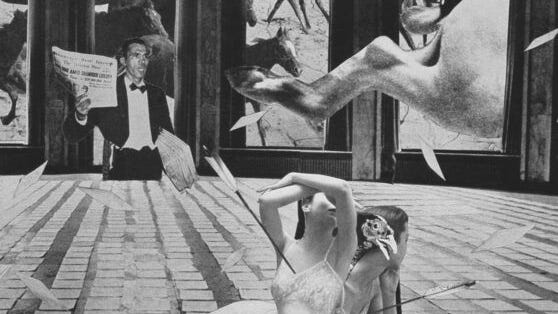
View more art by Toshiko Okanoue at Surrealism Today
Viewing: The Man Who Fell to Earth (currently airing on Showtime in the U.S., available internationally on Paramount+) is the TV sequel to the classic 1976 film of the same name directed by Nicolas Roeg. This version, set in the present, has Bill Nighy playing the iconic alien originally brought to life by David Bowie. It’s a slow burn, and the first episodes relied rather heavily on knowledge of the original film. However, once the real plot takes off, the dynamic between stars Chiwetel Ejiofor, Naomie Harris and Clarke Peters is absolutely riveting to watch. The latest episode completely won me over with the idea that jazz is the key to saving the planet. “Humanity is quantum. Humanity is jazz. And life – it's beautiful.”
Tasting: This week’s tasty tidbit is another local staple – kajmak (or kaymak) – a Balkan treasure for your taste buds. It’s considered a national dish in Bosnia, Bulgaria, Montenegro, North Macedonia and Serbia (we enjoyed it in Albania as well), though its origins are in the Ottoman empire and even further back to Turkic peoples in Central Asia (who make a version with milk from a water buffalo). The closest analogue is clotted cream, but I think it’s actually somewhere on the flavor/texture spectrum between butter (but richer and creamier) and cream cheese (but lighter and fluffier), with the extra tangy burst you get from goat milk or a pungent feta cheese. Here in Macedonia it’s often eaten with breakfast, and it’s perfect when spread on toast or a cracker. It would also be amazing on a potato chip underneath a spoonful of caviar (thanks to our brother Alan for that amuse-bouche!).
That’s it for this week! What are your reading, listening, looking, viewing and/or tasting recommendations?

